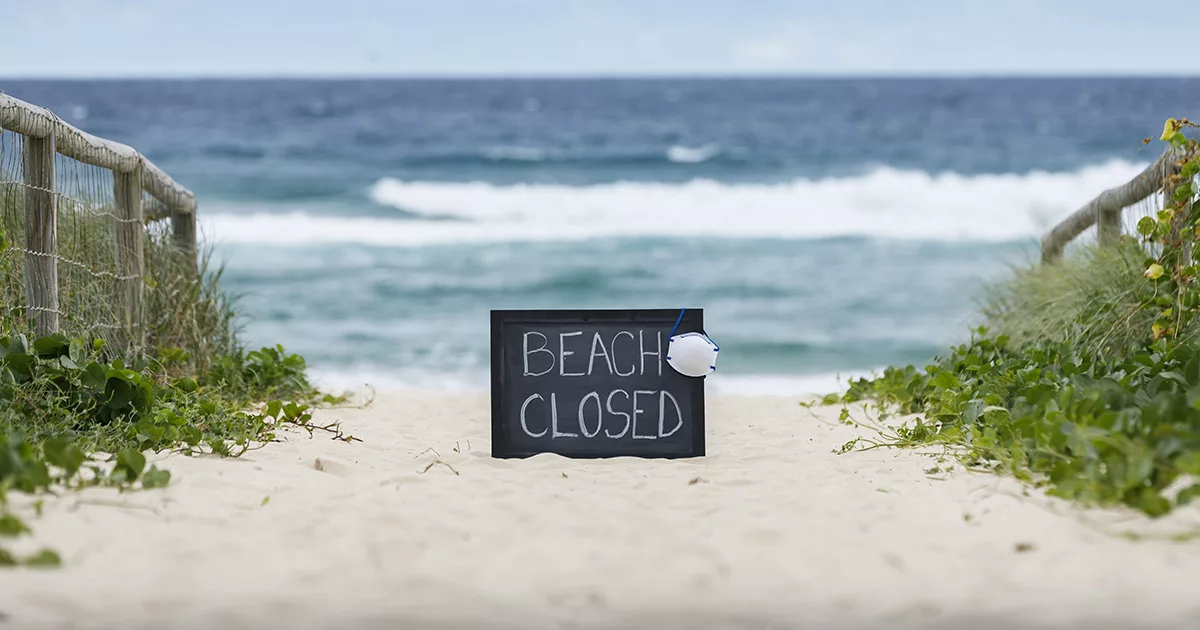By Anika Bhavnani
The global pandemic has impacted numerous industries and created previously unimaginable challenges. The entire travel and tourism sector, for instance, essentially came to a complete stop when COVID-19 struck. Since then, it has gone through the five stages of a break up: denial… depression… anger… acceptance… recovery, and is now readjusting to find its new normal. The Pollack Group partnered with the USC Annenberg School for Communication and Journalism to host a webinar of travel and tourism experts who shared their experiences and views on the reopening of their industry and what we can expect to see in the future.
The agency’s President Stefan Pollack and Group Supervisor Jackie Liu were joined by John Deveney, president at DEVENEY; Charles Harris, chief marketing officer and executive vice president of public affairs at Visit Anaheim; Wayne Sentman, director of conservation travel programs at Oceanic Society; Julia Carcamo, president and chief brand strategist at J Caracmo & Associates; and Kristen Braswell, travel journalist and founder of CrushGlobal Travel.
According to the expert panel, here is how it went…
Denial (March)
When the pandemic took force in the United States in March, many people did not believe or accept what was happening. In the denial period, industry leaders were confused and did not know what to do. They all shared that research was one of the most important parts of this experience. They needed to learn as much about not only what was happening, but also what could potentially happen.
• For Sentman, this meant finding new ways to bring back people who were at sea on trips, despite travelers’ reluctance.
• Harris and Visit Anaheim reacted to Disneyland’s closure for only the fourth time in its history, by immediately shutting off all messaging and reevaluating their next steps.
• Deveney focused on the research process, which he felt was paramount in understanding consumers’ desires and comfort levels. He also worked closely with the government to put together a strategy to be part of a successful long-term reopening.
Depression
This is “when it got real”. The future became uncertain with no set dates for reopening on the horizon, leaving people confused and scared.
• Braswell restructured her business to make it all revolve around the art of escapism. She tried to give people a travel experience from the comfort of their own home, known as “armchair travel.” Sentman shared how, similarly, Oceanic Society used Instagram to showcase experiences that people could no longer experience in person, such as swimming with humpback whales.

Anger
Many in the industry became frustrated about the uncertainty around reopening and the next steps for the industry. This anger became channeled through figuring out what the next steps would be on the road to recovery.
• Harris advised focusing on empathy during this time, showing understanding in messaging and aiding tourism-focused businesses to be helpful in a time of need. Visit Anaheim teamed up with local organizations to form a Response and Recovery COVID-19 task force to provide information and resources for local citizens and businesses.
• Carcamo stated that obviously casino marketers knew immediately they would need to restructure their marketing tactics, taking into account that attractions like night clubs and buffets would be suspended for the foreseeable future, even after casinos were permitted to reopen.
Acceptance (April)
This is when people realized that it is possible to work through all this and come out ahead during the pandemic. This was the time when industry leaders started to take action to restructure their businesses ahead of reopening.
• Carcamo noted how industries that reinvent themselves are always better-positioned to adjust. An example of this is how Las Vegas is implementing new safety measures as part of its reopening in June.
• Harris and Deveney both noted that considering that most people remain reluctant to travel by air right now, their marketing approaches have shifted to focus more heavily on personal vehicle travel and even “staycations.”
Recovery (May-June)
The final step. The world has a “new normal,” and each industry leader has different implementations, timelines, and protocols for their reopening and recovery.
• Deveney made it clear that most everything moving forward in Louisiana will be based on health measures and guidelines, acknowledging that a resurgence in cases could prompt an adjustment to any planned reopening timeline.
• Braswell is excited for what’s to come; however, she made it very clear that there will be no traveling taking place in the near future. She is focusing on continuing to create virtual experiences for people, especially those who feel like they are not yet ready to travel.
• Harris shared that most of the work he is doing right now is focused on locals. He understands that people are not in the market or mindset to travel; therefore, by focusing on people nearby he can drum up business.
As the industry prepares for what’s next, panelists reemphasized an obligation to keep people safe and not make any rash decisions that could jeopardize customer safety. Still, the travel bug is hard to extinguish as shown in a recent survey of travel writers who are open to press trips as travel restrictions are lifted. Carcamo added that “people are looking for a permission, and a reason to have fun.”
It was ultimately Braswell who summarized the webinar and the state of the industry best: “People are optimistic about travel, just unsure as to when.”






